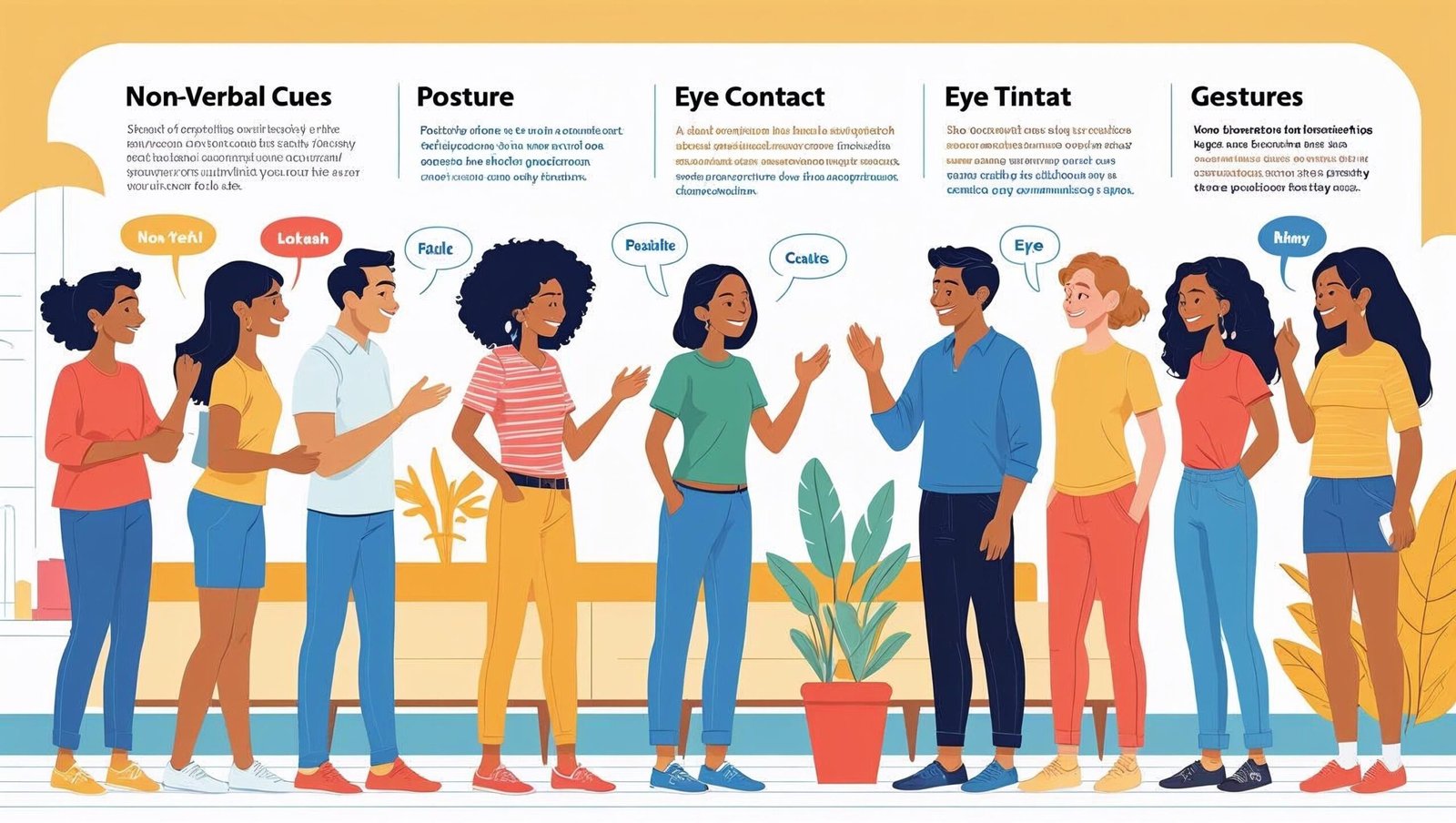52 Smart Strategies from The Communication Book That Will Change How You Connect
Communication is the cornerstone of every successful relationship, professional or personal. In a world where distractions abound and misunderstandings are rampant, mastering the art of effective communication has never been more essential. The Communication Book by Mikael Krogerus and Roman Tschäppeler serves as a practical, intelligent, and accessible guide to navigating the nuanced world of human interaction. With 52 bite-sized lessons, the book provides readers with one strategy per week, creating a year-long roadmap to better communication.
In this detailed blog post, we present a chapter-by-chapter analysis and practical interpretation of each model in The Communication Book, ensuring that readers not only understand the essence of each idea but are equipped to apply it in real-life contexts.

Introduction to The Communication Book
The Communication Book is structured around 52 models—one for each week of the year—offering tools from psychology, philosophy, business, and behavioral science. The book seeks to answer key questions: How can we speak more clearly? How can we better listen? How can we convey complex ideas simply? And most importantly, how can we truly connect?
Why This Book Matters
Krogerus and Tschäppeler understand that communication is multifaceted. Their models range from classical rhetoric to modern management theories. Whether you’re a manager, teacher, student, spouse, or friend, the strategies in The Communication Book are universally applicable.
Let us now explore each strategy.
Chapter-Wise Review of The Communication Book
1. The Shannon-Weaver Model
This foundational model introduces the concept of sender, message, and receiver. The authors emphasize that communication is a process vulnerable to ‘noise’—anything that interferes with message clarity.
Practical Tip: Reduce distractions. Ensure clarity in both message and medium.
2. The 4 Sides of a Message
This model explains how every message has four dimensions: factual content, self-revelation, relationship, and appeal. Miscommunication often stems from focusing on the wrong layer.
Application: Next time you’re misunderstood, ask yourself which layer was misread.
3. The Johari Window
Helps assess self-awareness and how others perceive you. Ideal for improving interpersonal relationships.
Reflection: Regularly seek feedback. Openness builds trust.
4. The Elevator Pitch
You should be able to explain your idea in 30 seconds or less. Clarity and brevity matter.
Usage: Prepare and refine your personal and professional elevator pitches.
5. Active Listening
Real listening means silence, presence, and withholding judgment.
Practice: Try repeating the speaker’s message in your own words to confirm understanding.
6. Nonviolent Communication
This model by Marshall Rosenberg stresses observing without judging, expressing feelings, and making clear requests.
Adopt: “I feel… when you… because… I need…”

7. The Iceberg Model
Only 10% of a person’s reality is visible. Emotions, values, and assumptions lie beneath.
Implication: Always dig deeper before judging someone.
8. Storytelling as Communication
Narratives resonate more than facts. Storytelling humanizes messages.
Application: In presentations, convert data into stories.
9. The Rhetorical Triangle
Ethos (credibility), Pathos (emotion), Logos (logic)—a timeless trio.
Tip: Balance all three in any persuasive communication.
10. The Dunning-Kruger Effect
People with low ability overestimate themselves; experts underestimate.
Lesson: Be humble. Test your assumptions.
11. The Map is Not the Territory
This classic NLP principle teaches that our perception of reality is not reality itself. Each individual interprets experiences differently.
Usage: Be mindful of assumptions. Ask clarifying questions before reacting.
12. Transactional Analysis
A model that breaks down communication into Parent, Adult, and Child ego states. Miscommunication often happens when roles are mismatched.
Practice: Communicate from the ‘Adult’ state for clarity and respect.
13. The Feedback Sandwich
Start with positive feedback, address the issue constructively, and end with encouragement.
Caution: Don’t be insincere. Sandwich with care.
14. Spiral of Silence
People tend to withhold opinions they believe are in the minority. This affects team creativity and innovation.
Encouragement: Foster psychological safety in groups.
15. Metaphors Shape Thinking
How we frame ideas changes how others receive them. Use metaphors to simplify complex ideas.
Tip: Use familiar imagery when explaining unfamiliar concepts.
16. The Curse of Knowledge
Experts often forget what it’s like not to know something, leading to confusion.
Solution: Explain concepts like you’re teaching a beginner.

17. Social Loafing
In group communication, individual effort may decline. Everyone assumes someone else will take charge.
Fix: Assign clear responsibilities.
18. The Ladder of Inference
Describes the mental steps we take from observation to action. Assumptions form quickly and can be faulty.
Practice: Pause and trace your thinking before reacting.
19. The 7 Cs of Communication
Clear, Concise, Concrete, Correct, Coherent, Complete, and Courteous. These elements define high-quality communication.
Checklist: Use the 7 Cs to audit your emails and presentations.
20. The Rule of Three
People remember things in threes better. Great for structuring arguments and speeches.
Try: Group your points in triads.
21. Framing Effect
How something is presented affects decision-making. Highlight gains rather than losses.
Application: Frame feedback constructively.
22. The Trust Equation
Trust = (Credibility + Reliability + Intimacy) ÷ Self-Orientation
Note: Reduce self-interest. Build rapport and consistency.
23. Emotional Contagion
Emotions spread in groups. A communicator’s mood can influence everyone.
Mindfulness: Enter conversations with positive intent.
24. The Spotlight Effect
We overestimate how much people notice us. This leads to anxiety.
Reframe: Most people are focused on themselves. Relax.

25. Mirror Neurons and Empathy
Our brains simulate others’ feelings. Understanding this boosts empathy.
Strategy: Mirror body language subtly to build trust.
26. Confirmation Bias
We tend to favor information that confirms our beliefs and ignore data that contradicts them.
Reflection: Challenge your assumptions regularly. In communication, ask yourself: “Am I truly listening or just waiting to confirm what I already believe?”
27. The Halo Effect
First impressions often color our entire perception of a person.
Awareness: Reevaluate opinions after deeper interactions. Don’t let initial biases dominate.
28. The Pygmalion Effect
Expectations influence outcomes. When we expect more from people, they tend to perform better.
Tip: Convey high expectations subtly in conversations, especially with team members or children.
29. The Principle of Reciprocity
People feel compelled to return favors.
Action: Give first—whether it’s help, attention, or kindness. Reciprocity will likely follow.
30. The Illusion of Transparency
We assume our feelings and intentions are obvious to others—but they’re not.
Practice: Communicate emotions and expectations clearly. Don’t assume others can read your mind.
31. Groupthink
Teams sometimes suppress dissent to maintain harmony.
Fix: Encourage constructive disagreement. Assign someone to play the ‘devil’s advocate’ during decision-making.
32. The Zeigarnik Effect
We remember unfinished tasks better than completed ones.
Application: Use this in persuasive writing—leave some questions open or stories incomplete to maintain curiosity.
33. The Communication Funnel
Start broad, then narrow down. Guide your audience from general understanding to specific conclusions.
Tip: Don’t begin with details. Build context first.
34. Status Quo Bias
We resist change. Communication often needs to address people’s fears about change.
Strategy: Emphasize continuity and familiar elements when introducing new ideas.
35. The KISS Principle (Keep It Simple, Stupid)
Simple messages stick. Complexity repels attention.
Implementation: Use plain language. Avoid jargon. One strong message beats five muddled ones.
36. The IKEA Effect
People value things they’ve helped create more.
Usage: Involve your audience in your message. Ask for opinions. Make communication a two-way process.

37. Anchoring
The first piece of information shapes all that follows.
Usage: Lead with your strongest point. In negotiation, set the tone with the first number or offer.
38. The Paradox of Choice
Too many options create anxiety.
Simplify: Present a few clear choices. Don’t overwhelm your audience with too many directions.
39. Reframing
Change the perspective and you change the outcome.
Example: Instead of “We failed,” say “We learned what not to do.”
40. The Bystander Effect
The more people present, the less likely anyone is to act.
Solution: Direct your message specifically. Say, “You, John, call 911,” not “Someone call 911.”
41. Scarcity Principle
We value things that are limited.
Application: Add urgency to communication—mention deadlines or limited opportunities.
42. The Endowment Effect
People overvalue what they own.
Negotiation Tip: Frame changes as additions, not subtractions.
43. Self-Fulfilling Prophecy
Beliefs about a situation influence behavior, which in turn influences outcomes.
Use: Communicate your belief in someone’s potential.
44. The Fogg Behavior Model
Behavior = Motivation + Ability + Prompt.
Message Design: Keep messages actionable, simple, and well-timed.
45. The 5 Whys
Ask “Why?” five times to get to the root cause.
Use: In conflict resolution or idea generation.
46. The Eisenhower Matrix
Prioritize communication tasks by importance and urgency.
Use: Focus on messages that are important but not urgent to drive long-term success.
47. The Pareto Principle
80% of results come from 20% of effort.
Tip: Focus communication efforts on what drives most impact—often clarity and consistency.
48. The Benjamin Franklin Effect
Doing someone a favor makes you like them more.
Strategy: Ask small favors to build rapport.
49. The Serial Position Effect
We remember the first and last items in a list best.
Tip: Place key messages at the beginning and end.
50. Cognitive Dissonance
People experience discomfort when holding conflicting beliefs.
Bridge the Gap: Gently challenge contradictions without triggering defensiveness.
51. The McGurk Effect
Visual cues can alter what we hear.
Insight: Ensure your non-verbal signals match your message.
52. The Circle of Influence
Focus communication on areas where you can make a difference.
Final Lesson: Empower your voice where it matters most.

Extended Reflections on The Communication Book
After exploring all 52 strategies, it becomes clear that The Communication Book is more than a self-help title—it is a reflection on the human need to be understood. Each of the strategies included in The Communication Book can stand alone, but their collective power is what transforms everyday communication into purposeful interaction.
Communication as a Mirror
The book implicitly presents communication as a mirror that reflects not only the clarity of our message but also our emotional intelligence and values. Effective communication begins with self-awareness. The models encourage readers to ask: What kind of communicator am I? How do I come across to others? How can I bridge the gap between intention and interpretation?
The Communication Book provides a mirror that helps us see these facets more clearly and work toward improving them intentionally.
The Role of Empathy
Empathy threads its way through nearly every model in The Communication Book. Whether it’s through active listening, understanding the biases of our audience, or framing our message with compassion, empathy is a recurring theme. The model on Confirmation Bias, for example, encourages us to suspend judgment. The model on Reframing teaches us to look from the other person’s perspective. Together, these tools remind us that true communication is not just transmission—it’s transformation.
Leadership and Influence
The Communication Book is particularly relevant for those in leadership roles. A leader’s effectiveness hinges on their ability to communicate purpose, vision, and feedback clearly. Tools like the Eisenhower Matrix, the Pygmalion Effect, and the Pareto Principle are not just theoretical—they are actionable strategies for daily leadership communication. By mastering these, leaders foster trust and alignment.
Digital Relevance of The Communication Book
In the era of emails, social media, and Zoom calls, The Communication Book proves incredibly modern. Although it doesn’t directly address digital channels, the core principles are easily adaptable. The KISS Principle, Anchoring, and Status Quo Bias all have new dimensions in the digital space. Crafting an effective subject line, maintaining brevity in posts, and framing new ideas for an online audience are challenges directly tackled by the models in the book.
Interpersonal Relationships
One of the understated strengths of The Communication Book lies in its relevance to personal relationships. Communication breakdowns in families, friendships, and romantic partnerships are often due to misinterpretation and assumptions. Models like the Illusion of Transparency, Cognitive Dissonance, and The Circle of Influence help us build stronger, more respectful, and loving connections.
Applications for Educators
Teachers and trainers can find immense value in The Communication Book. Concepts like The Halo Effect and The Benjamin Franklin Effect are vital in classroom management and student engagement. When applied thoughtfully, they create a supportive learning environment that boosts motivation and understanding.
Self-Communication
Perhaps the most transformative insight in The Communication Book is that communication isn’t just with others—it’s also with ourselves. Internal dialogue shapes our self-esteem and decision-making. The model on Self-Fulfilling Prophecy illustrates this best. If we communicate positively with ourselves, we’re more likely to take positive action externally.
Final Thoughts on The Communication Book
The Communication Book by Mikael Krogerus and Roman Tschäppeler is a rare combination of brevity and depth. Its 52 models are concise enough to digest easily, yet profound enough to initiate genuine change. The authors have managed to balance academic rigor with everyday relevance.
For professionals, it’s a toolkit. For students, it’s a study guide. For families, it’s a healing manual. No matter your role, The Communication Book encourages you to become more deliberate, empathetic, and influential in your conversations.
If you are looking to improve how you communicate in both your personal and professional life, this book should be on your shelf—and in your practice.

Final Reflection on The Communication Book
After reviewing all 52 strategies in The Communication Book, it becomes evident that effective communication is a skill refined over time. What makes this book extraordinary is its simplicity and applicability. Each week’s lesson can be revisited, practiced, and built upon.
The models encourage self-awareness, empathy, and clarity—traits sorely needed in both professional and personal spheres. If you want to improve your conversations, presentations, feedback skills, or emotional intelligence, this book is not just a read—it’s a toolkit.
Whether you are a leader, parent, educator, or student, the principles from The Communication Book can revolutionize how you relate to others.
Frequently Asked Questions (FAQs)
Q1. What is the main idea of The Communication Book? The Communication Book offers 52 communication strategies—one for each week—to help readers become better communicators through practical models derived from psychology, management, and behavioral sciences.
Q2. Who should read The Communication Book? This book is ideal for professionals, students, managers, and anyone seeking to improve their interpersonal skills.
Q3. Is The Communication Book suitable for beginners? Yes. The language is simple, and the ideas are structured for ease of application.
Q4. How can I best use this book? Apply one model per week. Reflect and journal your communication experiences.
Q5. Does this book address modern digital communication challenges? Yes. Several models are applicable to email, social media, and virtual meetings.
Conclusion
The Communication Book by Mikael Krogerus and Roman Tschäppeler is not just a guide—it is a lifelong companion for those committed to evolving their communication style. From timeless models to cutting-edge insights, it equips readers to thrive in conversations, lead more effectively, and connect authentically.
Every page of this book teaches us that communication isn’t about speaking more—it’s about connecting better.
If you’re ready to transform the way you interact with the world, The Communication Book is your roadmap.
Reviewed by: Shubhanshu Shekhar
Visit: shubhanshuinsights.com
Leave a Comment Below:
- Have you tried any model from The Communication Book? Which worked best?
- Which strategy did you find most eye-opening?
- Would you recommend this book to professionals or students?
Let’s grow together—one conversation at a time.